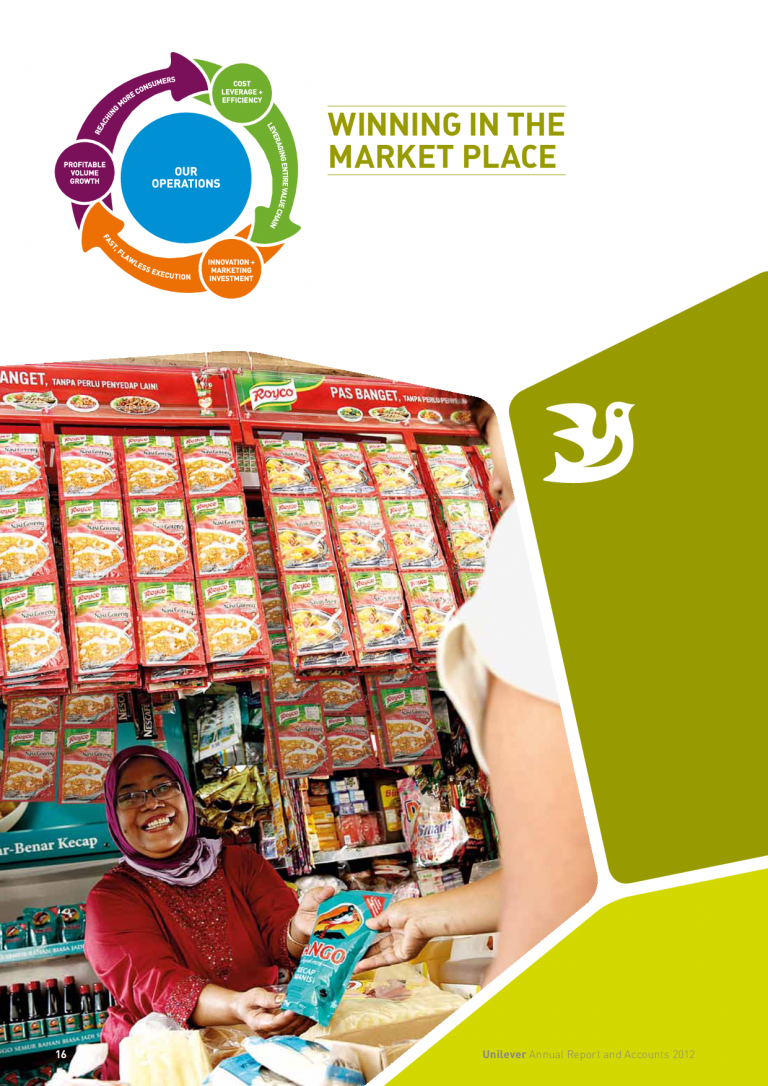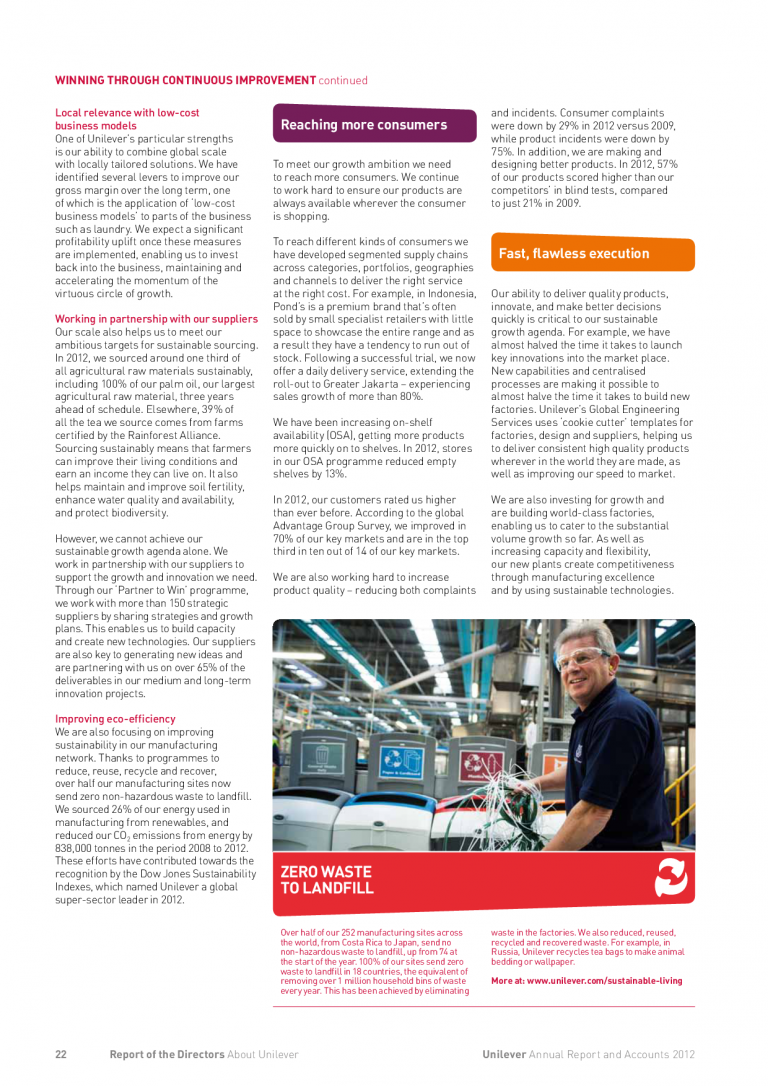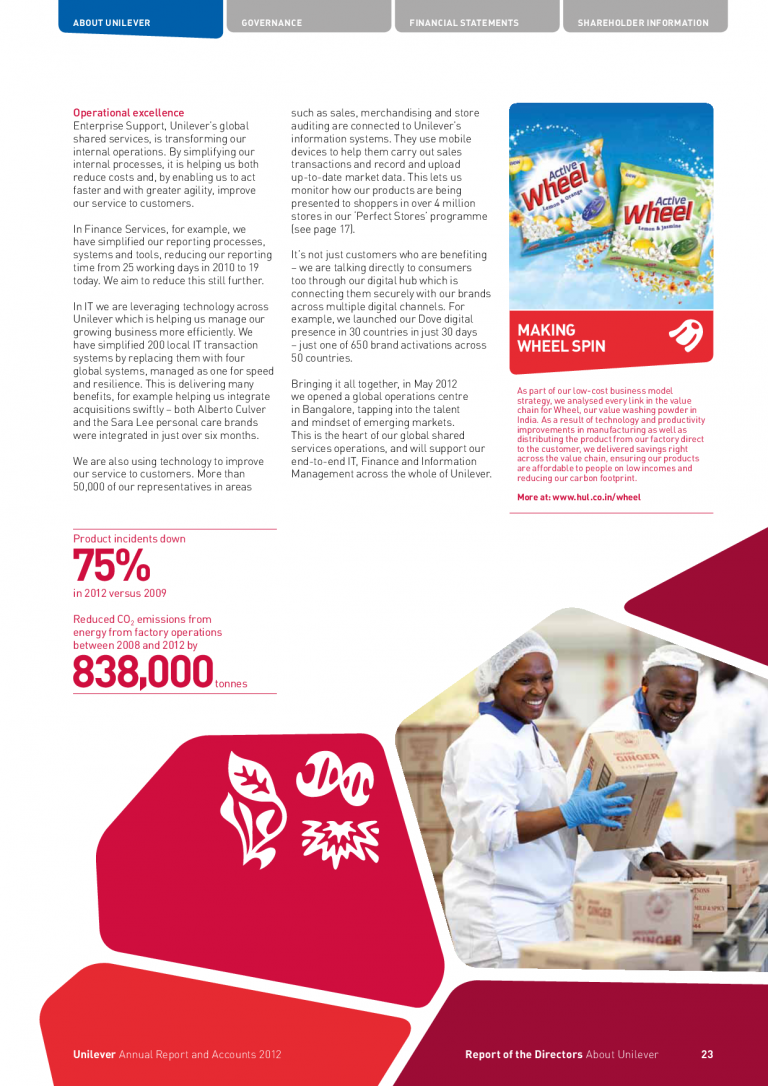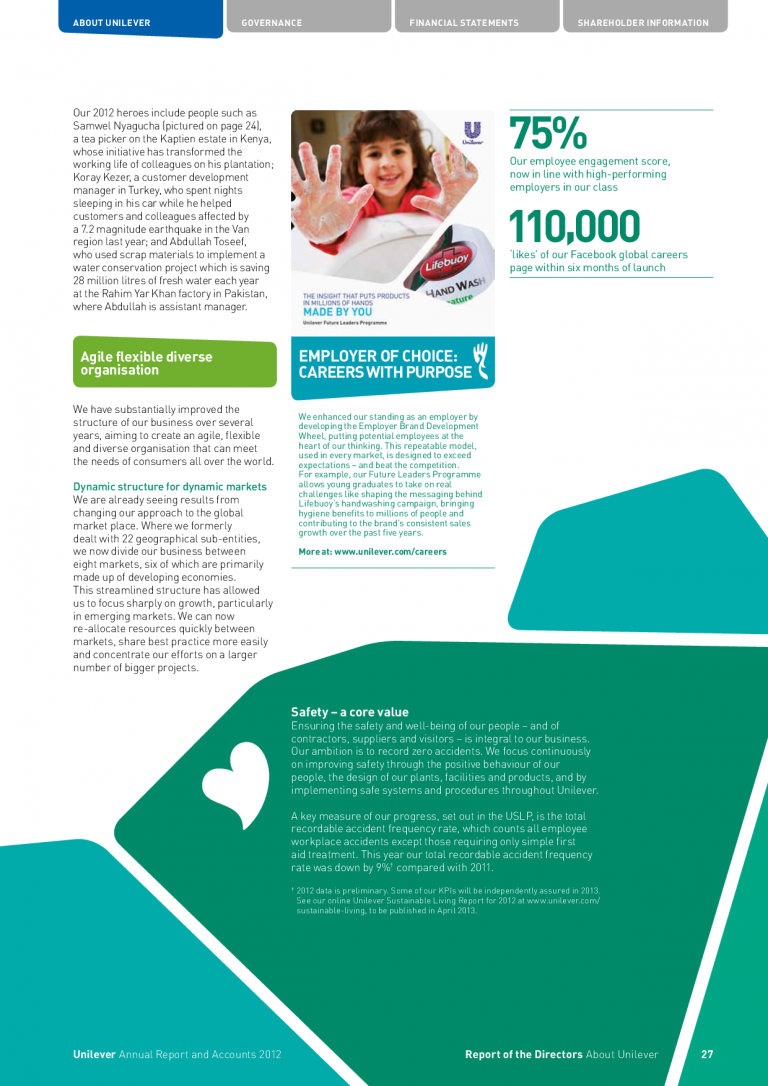Organisational overview and external environment
- Conciseness
- Connectivity of information
- Consistency and comparability
- Reliability and completeness
- Stakeholder relationships
- Strategic focus and future orientation
Key observations:
Unilever’s 2013 Annual Report document is entitled ‘Making sustainable living commonplace’. This is also the company’s vision, which is reflected throughout the opening section of the Report. Interestingly, examples of the business’ recognisable brands which are particularly focussed on purpose-driven solutions are outlined on the inside front cover, and more are signposted to online.
The Chairman’s statement is right at the front of the Report, and the Chairman specifically states the importance of the Unilever Sustainable Living Plan (USLP) to achieving sustained performance in tough economic markets. This demonstrates that the business sees achieving the aims of the USLP as a competitive advantage in the eyes of its stakeholders. The Chairman also gives a sense of the way the business is embracing the USLP in delivering against the strategy, and the extent to which this has impacted Group performance.
The Chief Executive Officer’s review provides social and environmental context for the business, outlining the macro-level issues that have an impact on the business such as resource constraints. He then sets out Unilever’s view that responsible businesses are more sustainable over the long term, because being a good corporate citizen builds stakeholder trust – and he links this approach to the objectives of the corporate strategy, the Compass Strategy, and overall Group performance. Finally, he outlines Unilever’s commitment to leadership as a responsible business and being part of the solution to global issues.
The strategy follows the CEO’s review, with a simple, specific strategic vision of doubling the size of the business whilst reducing environmental footprint and increasing positive social impact. The strategic discussion emphasises that the global market context has provided the framework for a strategy and business model which is future-focused.
The business model discussion then outlines how the different elements of the business work together to tackle challenges and seize opportunities, creating a ‘Virtuous Circle of Growth’. Without specifically mentioning ‘capitals’ per se, Unilever has identified the key inputs into the business model as well as the outputs they enable – profitable volume growth, cost leverage and efficiency, innovation and marketing investment – demonstrating the overall value the business model delivers. The pages that follow go through each element of the business model in more detail, starting with the core of the ‘Sustainable living plan’, positioning each element as part of Unilever’s competitive advantage and ability to ‘win’.




























